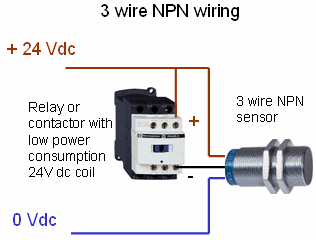Proximity sensors are utilized to identify objects without connecting. There are 2-wire and 3-wire nearness sensors, and 3-wire proximity se...
Proximity sensors are utilized to identify objects without connecting. There are 2-wire and 3-wire nearness sensors, and 3-wire proximity sensors are more well known. There are two primary kinds of nearness sensors in light of their result type: NPN and PNP.
Choosing the right kind of proximity sensor for a specific application can guarantee the right activity of a situation. This article intends to give a framework of the two principal yield types and an aide on the best way to interface a vicinity sensor to a PLC.
A bipolar junction transistor is constructed from three silicon components. N-type or P-type semiconductors will result from the silicon's addition of various substances. P-type silicon (the base) is placed between two pieces of N-type silicon in an NPN transistor (the collector and emitter). In a PNP transistor, the layers' types are switched around.
What is NPN Proximity Sensor? and how it work?
An active LOW output is provided by NPN proximity sensors. This indicates that the sensor's output is connected to the ground when an object enters its detection range. This particular sensor is also referred to as a "sinking" sensor.
We can use the following analogy to help us recall the wiring of a 3-wire DC proximity sensor:
PNP = Switched Positive
NPN = Switched Negative
What is PNP Proximity Sensor? and how it work?
How to make 3 wire connection of PNP and NPN proximity sensor ?
The 3-wire type of proximity sensor is the most common. When an object is identified, they flip the output using PNP or NPN type transistors.
Two of the wires are needed to supply electricity to the sensor so that it can function, while the third wire is the sensor's output.
 |
| 3-Wire NPN wiring |
At this point, it's important to note that whether a sensor is PNP or NPN in type does not necessarily indicate whether its output is generally open (N/O) or closed (N/C). The application is the only factor in this. (For example, an NPN sensor can be either N/O or N/C, just as a PNP sensor can be either N/O or N/C.)
 |
| 3 Wire PNP wiring |
The PNP type wiring differs from the other wiring in that the relay is always connected to 0V and the sensor switches +24V. However, in NPN type wiring, the sensor switches the 0V connection and the relay is always linked to +24V. Regardless, the sensor is powered by connections to +24 and 0V
How to wire NPN type 3-wire proximity sensor to PLC ?
Make sure the PLC is set to the 'sourcing' type before connecting the sensor to it. This can be accomplished by connecting input 1M to +24V on a Siemens S7-200 PLC. In other words, when an object is detected by the NPN sensor, the PLC will "source current" out of the input and the NPN sensor will "sink current."
If an input card is used to feed the input to the PLC, it must be either a sourcing type input card or one that can be customized. One such sourcing-type input card is the SIMATIC S7-1200, Digital Input SB 1221.





No comments